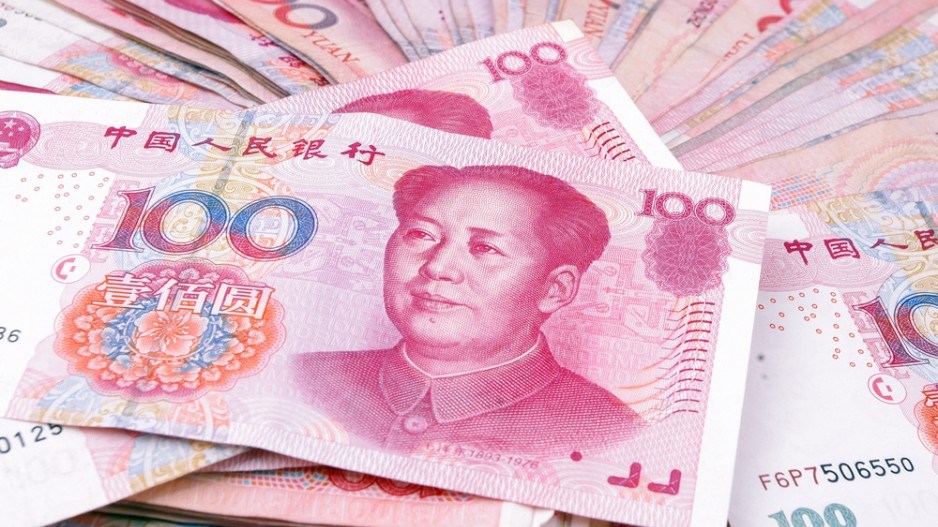Since China abruptly depreciated its currency last August, the country’s wealthy have been trying to bypass the strict capital controls and transfer money abroad in many inventive ways, in search of better-yield investments.
But analysts say the capital flight could stabilize, if the central bank effectively increases two-way flexibility of the exchange rate and tames the expectations of a falling yuan.
On August 8, the yuan’s official mid-point rate against the U.S. dollar had plunged 9% since August 11, 2015, when the People’s Bank of China stunned markets by lowering the daily fixing by 1.9%, the largest cut ever.
The yuan has also slumped against most of its major currency rivals, down more than 10% and 30% respectively against the euro and the yen in the past 12 months.
Expectations of a declining yuan, combined with the gloomy economic outlook, have sparked unprecedented capital outflows.
The most recent data shows China’s foreign exchange (FX) reserves declined by US$4.1 billion in July to US$3,201 billion. Compared with the end of July 2015, the reserves have shrunk by US$450 billion.
“Although the capital outflow pressure has eased from 12 months ago, it still persists,” said Larry Hu, an analyst for Macquarie Research.
“A considerable portion of the outflows may be due to Chinese residents’ buying overseas assets, as they seek better and safer investments amid the decline of the home currency.”
China does not publish detailed figures about its capital outflows. But according to an estimation by Goldman Sachs in July, there were US$372 billion in outflows by Chinese residents spent on foreign assets in the second half of last year, and another US$108 billion left the country in the first quarter.
Separately, net capital outflows amounted to US$123 billion in the first quarter, compared with US$504 billion in the second half of last year.
The official methods of Chinese residents’ accumulation of FX assets include outward direct investment, portfolio investment assets and other investment assets, according to the headline reported data from SAFE.
However, Goldman analysts add the negative numbers in “net errors and omissions” might also represent disguised capital outflows, as that number ballooned in the third quarter of last year.
China imposes strict capital control on residents, restricting individuals to buying no more than US$50,000 in overseas assets annually.
Nonetheless, Hu said, “there are some policy loopholes which people use to disguise their capital flight. A widely used method is to fake invoices, such as overstating the value of imports.”
For example, a Chinese company imports a machine and invoices it at US$1 million, while it’s actually worth US$500,000. The company pays the actual amount and puts the rest of the money in offshore bank accounts or invests it in other overseas assets.
Although the Chinese banking regulator has tightened the scrutiny of residents’ overseas transactions, Hu said “ it’s hard to eliminate those activities.”
And Hong Kong is being used to disguise such capital outflows, experts say.
“Much of that money feeds through Hong Kong,” said Victor Shih, a professor at University of California, San Diego.
Imports from Hong Kong have surged since December, official statistics from China show.
In July, imports from Hong Kong grew 143% year-on-year. In June and May each, imports from Hong Kong soared 144% and 243%.
Chinese customs officials had previously attributed much of the surge to China’s increasing imports of gold from Hong Kong.
However, analysts say the figures still look a little suspicious.
“Growth momentum like this looks very unusual, given the overall grim picture of imports and exports, though the base was comparatively small in 2015,” said Andrew Collier, managing director of Orient Capital Research.
He added that other methods of disguising capital flows include overstating the amount of an overseas M&A.
“Chinese enterprises made outward direct investments totalling US$118 billion across all industries in 2015, up by 14.7% from the previous year,” he said.
“However, much lower-than-expectation profitability of these overseas projects is what truly defines the nature of China’s ODI largely as capital flight.”
But for individuals who want to sneak out more than US$50,000 to buy overseas assets, such as a house in New York or Vancouver or Sydney, a popular way is to pool quotas of a group of family members or friends, with each person transferring US$50,000 out of the country.
The process is called “smurfing” in the banking industry, or “ants moving their house” in Chinese.
Another widely known method employed by individuals is to use underground private banks, which are popular in China’s southeastern provinces such as Guangdong.
A Chinese resident can deposit one million yuan in his account in a domestic private bank and take out the same value of money in foreign currencies in the bank’s overseas branches within hours.




